The owners of the Tennessee Brewery are about to ignite the greatest historic preservation campaign in Memphis history.
That’s because they have raised the specter that in the next 60-90 days, they will decide if the 123-year-old Romenesque Revival beauty will be demolished, proving once again that it’s cold comfort when a building is added to the National Register of Historic Places. In the case of the Tennessee Brewery, that was in 1980.
Over the years, all of us have heard the stories of people enamored with the brewery, but concepts for condominiums and have fallen victim to large renovation pricetags. There was the ballyhooed idea for 140 residential condos, a couple of floors of shops and restaurants, and four or five floors of garage parking landed with a thud. The idea for its conversation into art space in 2001 fell apart two years later.
Today, its owners say that the land is worth more than the building although the Shelby County Assessor disagrees. The assessor appraisal is $262,100, and the building accounts for just over half of that amount.
Photographer Walter Arnold, in Art of Abandonment, captures the allure of the castle-like building, and it can be seen here in his gorgeous photographs and video.
He wrote: “The brewery has other claims to fame beyond beer. A few scenes from “Walk the Line” were actually filmed inside. Memphis Paranormal Investigations have investigated overnight about 12 times and claim it is one of the most haunted buildings in Tennessee. During our 8 hour daytime shoot however we never felt any unease or heard anything other than the trolley out front coming by every 20 minutes on its circuit. That being said… I’m not sure I would like to spend the night there.”
It’s hard for us to look at the Tennessee Brewery without wishing for Bob Cassilly.
He’s the founder, creator, and creative director of the distinctly idiosyncratic City Museum. He was a sculptor and an entrepreneur, and his imagination gave birth to some of the most bizarre grab bag of exhibits and collections anywhere.
City Museum consists largely of repurposed architectural and industrial objects housed in the former International Shoe building in the Washington Avenue Loft District of St. Louis. The Tennessee Brewery puts the International Shoe building to shame, although it’s easy to imagine some of the City Museum artifacts and imaginative features transplanted into the Memphis landmark.
The City Museum, which opened in 1997 and attracts about 750,000 visitors a year, engenders rave reviews, and from the following delightful video, you can see why. It was filmed by Memphian Allen Gillespie features Memphis kids, and does the best job we’ve seen of showing the sheer delight of the City Museum as he set out to capture “some of the wonder, adventure, and outrageousness of Bob Cassilly’s inspiration.”
Unfortunately, Mr. Cassilly died in 2011 when a bulldozer flipped over on him while he was repurposing another building in north St. Louis.
But here’s the thing: it’s highly possible that we already have someone like Mr. Cassilly…or a group of clever, imaginative, creative people who together could imagine an equally fascinating project in the Tennessee Brewery.
City Museum proves the ability of an architecturally significant building housing a collection of distinctive exhibits, interactive experiences, and eclectic collections. We know that the current owners are looking for a payout, but it would be an interesting and useful exercise if they put out a call for ideas to convert the brewery into a singularly idiosyncratic Memphis attraction.
No one conceived of the impact of the City Museum in St. Louis and the ability of a creative person to develop a wonderfully unique place but also to enhance the brand that the old Midwest city itself has.

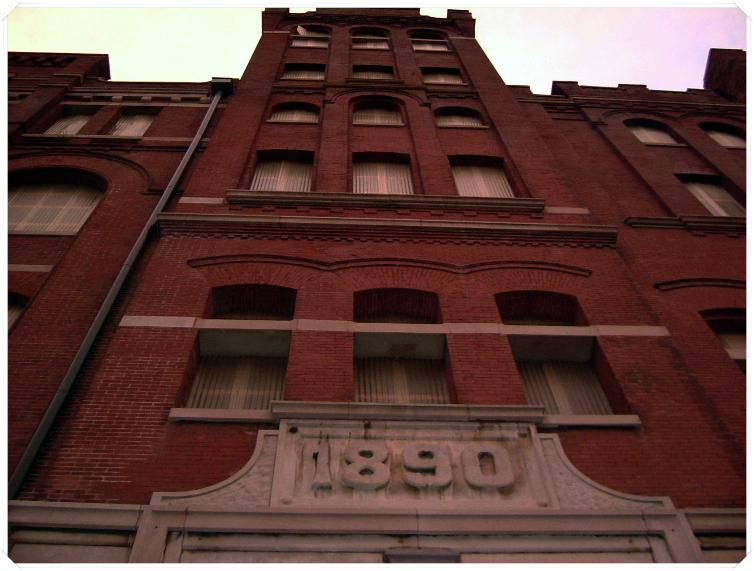
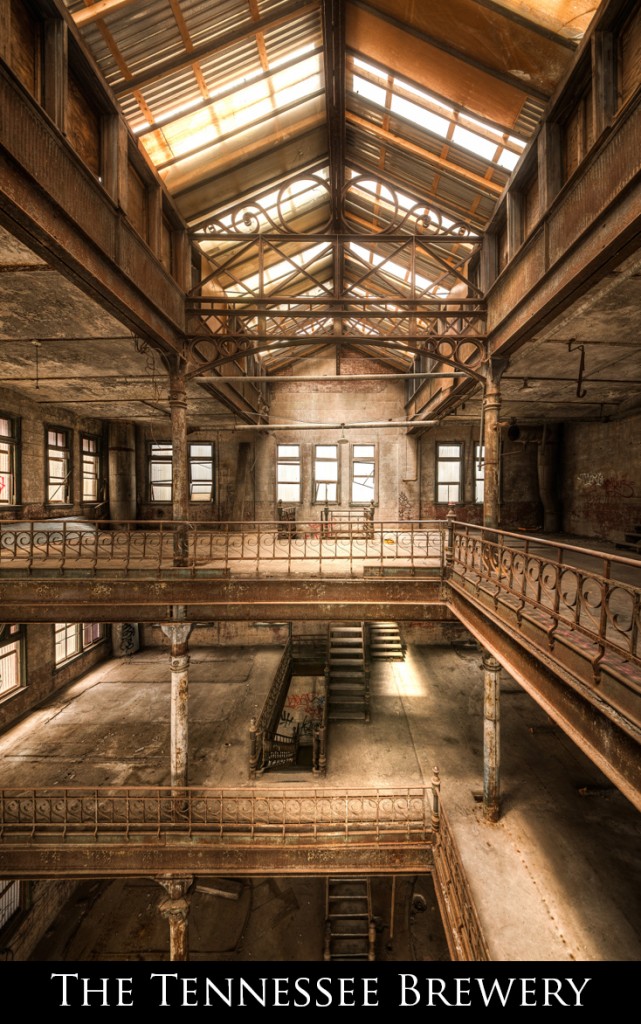
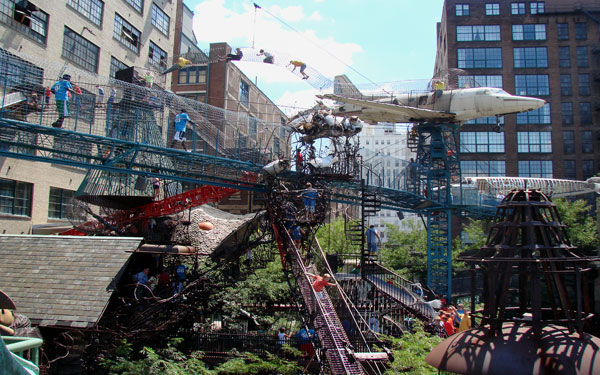
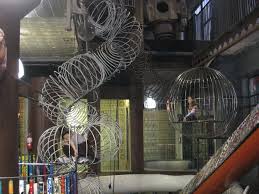
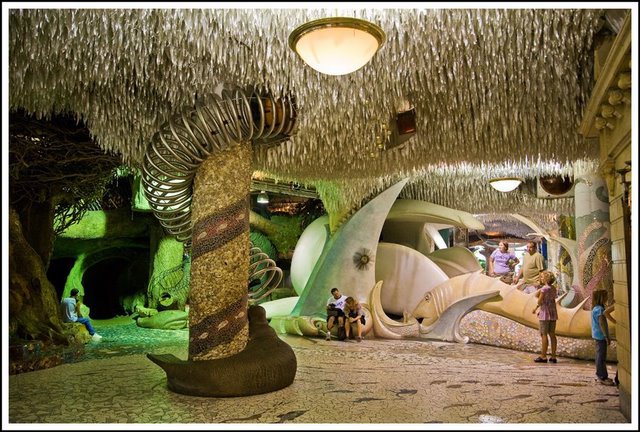



The problem is not lack of creativity at this point – the problem is money. The owners have hung in a long time hoping for a creative development idea. It is very easy for the preservation crowd to scream “save it!” but this stuff takes cash, and lots of it. And I am part of the “save it” chorus usually – but these owners do not deserve to be pilloried (not that you’ve done that in this article – but others have elsewhere).
It would be grand to have a City Museum-like project in this building – or an Eatly or some other creative use – but where is the money going to come from?
Carla – we did not think we were pillorying owners. The fact that none of the previous proposals could fly speaks volumes to complexity of developing this building. We are simply suggesting that perhaps owners could make more money doing something out of the box like City Museum than tearing it down and building residential. And, there has been public, private and philanthropic money put into projects of this type before. There would need to be a lot of due diligence to determine feasibility of course, but we hope all options will be exhausted before the buildimg is razed.
All the previous attempts have wanted to take on the whole building at once to renovate. What if we start small- renovate one area on the bottom floor for a concert venue, move on to the next area as a gallery and/or shopping area, and keep moving with small crowd-funded projects until we have reclaimed the space as an artistic/creative area- like what is going on with Crosstown Arts?
i have been wracking my brain to try to figure out how to save this building- ever since i first laid eyes on it, i have imagined it as a creative space, with working artists, galleries, music and more. I think it can happen, but people are saying “Silly- this is Memphis, we don’t support stuff like this”. It just makes me want to prove them wrong!
We should not be having this discussion. The 19th Century Club should not be under the wrecking ball. Too many beautiful structures should not be forgotten piles of rubble. While many folks interested in historic preservation have their hearts in the right place, they seem to misunderstand how it really works. I would like to see Memphis Heritage and others develop a long range plan for preserving what few available buildings we have left. Share that plan and earn a spot at the economic and community development table! Make it a part of our regular lexicon – whenever we talk about neighborhood development, historic preservation is part of the conversation. Actively work to recruit investors (traditional and non-traditional) to save building BEFORE the threat of demolition.
You wonder why our preservationists have so much trouble raising money? Give me something to invest in! Give me a vision, and a plan, and a proactive approach to blending the old with the new. Pictures of beautiful, old buildings, accompanied by an ominous voice-over threatening demolition – not a sustainable fundraising model.
How many buildings do we have to lose before we change our approach to saving them?
Brilliantly said, Gwen.
Brandy: good point. It just has to make business sense to owners.
Don’t worry I am sure Fred Smith will step in to help.
Gwyn- Great comments! Reactionary efforts will by default be less effective simply because the timeframe to forge the partnerships necessary to tackle the projects the free market is unable to address will always be so limited. Brandy’s comments regarding crowd-sourced projects are in concert with Gwyn’s call for funds that enable Memphis Heritage to be more than simply a voice for these buildings by becoming a financial partner in their transformation. Tough nut to crack with the Brewery.
Personally, I want nothing more than to establish and fund a local development company whose financial goal would be to recoup the money invested in design and construction with no requirement to actually turn a profit. This would allow me to embark upon a wide range of “marginal” projects where the returns are not strong enough to entice private developers and/or support of financial institutions. Consider it a non-profit development concern that is not regulated to low-income investment. Such an approach, of course, would require essentially cutting out the “bank” as a financial middle man and relying on a moderately deep private fund for financing. That is where a small to medium Powerball or Mega Millions purse enters the picture.
It is at the top of my list. As soon as I hit the Powerball.
I moved from Atlanta, and they just started doing a large project that this reminds me of. Ponce City Market. poncecitymarket.com
Retail, Office Space, and Flats
Memphis is a city with a ton of opportunity. We just need to come together as a city and demand that we want these things. We can take some of the best things from every city because of our layout and location.
Main to Main is essentially a version of High Line in NYC. We just need to make the Main to Main not just a long side walk. Green Space and public art space would be great.
I’m still trying to figure out why we created Tiger Lane when U of M football is terrible.
WSH:
Ponce City Market is a great project and it’s in a former massive Sears Roebuck building. I want to make sure you have seen the plans for our former Sears building in Crosstown Memphis. http://www.crosstownmemphis.com/
While Tiger Lane’s been seen as a tailgating location, it’s actually the spine for the large-scale Fairgrounds redevelopment project. South of it will be major league sports facilities and north of it will be residential, a new gym for Fairview and retail.
Thanks for the comments and with your perspective, we look forward to your contributions here.
The picture of the interior of Tennessee Brewery is unbelievable for Memphis, Tennessee or Anywhere, USA.
@Smart City
Thanks. I’ve lived in Atlanta and watched many of the areas change over the past few years. I think the readers will enjoy reading about Ponce City market and comparing it to the Sears plans. In regards to the fair grounds, I heard about the initial plans, but have we heard anything new about the fairgrounds redevelopment?
@Carla Eataly/Slow Foods is an awesome concept but the Memphis demographic isn’t the type to support such expensive retailers like this or Dean & Deluca. Having family that has owned grocery stores in Memphis and worked on the corporate level for growing chains… we can barely convince a Trader Joes to open.
What would be a good multi-use space for this that wouldn’t compete/destroy other businesses ( music venue). It needs to cater to the residents more than tourist, because we aren’t going to get much funding support due to conflicts with The Fair Grounds. Could this because an area like Brooklyn Flea and also have the Farmer’s market move there? The issue I see with this model is that the city would have to be the initial investor, because this would not generate enough capital to lure an outside investor (today or in 60 days). Gutting the building seems to be the best thing, because restoration is to costly with little return.
WSH- those are great ideas. While I think the farmers market- at least the Downtown Farmers Market has likely already outgrown this space, I think something along the lines of the Brooklyn Flea is a great idea, although- as you mentioned- this alone would be unlikely to generate the revenues necessary to support both building renovation and the market organization itself. An interesting side note: there was a market in a building located across the street from the brewery named the Butler Street Bazaar. That building was demolished in 2007 to make way for a new residential development which itself never came to fruition. In support of your idea, the demographics of the downtown area have changed over the past 6 years. The downtown core zip codes have seen a population increase of 56% and a median income increase of 13% (after adjusting for inflation) to something like $67,120.
I wish a more in depth information could be provided by any source that would elaborate on the hurdles that apparently inflate the renovation costs beyond what the market can support (because the market supports relatively high cost per square foot values in that area).
Memphis Daily news has an article re: demolition of the property.
You have to like how Paul Morris came across as somewhat aggressive in reference to those who are “demanding preservation” in his comments provided to the Memphis Daily News by saying they should provide “some cash to cover the carrying costs”. It makes you wonder exactly what Morris and the DMC do on a daily basis. While it would be dandy for Memphis Heritage to start doling out money, they are a nonprofit who have taken it upon themselves to at least raise awareness regarding demolition of the city’s historic structures and have at least verbally availed themselves to assisting those who own historic properties with information regarding creative financing. On the other side we have the head of the DMC- a public organization- saying “I certainly hope someone finds a way to redevelop this historic building, as it would be a terrible shame to lose it, and it would also be a terrible shame to let it continue to rot unoccupied.” We have heard this quote time and again. “We wish”, “I hope”, “well it certainly seems”. Well hoping and wishing for other parties to come to the rescue is about as reactive as the business plan of Memphis Heritage. Where has Morris and the DMC been while the building was rotting? Instead of just “hoping”, maybe the DMC could have performed some legwork to show the very real monetary value in the various tax credits and grants that could be available to a potential developer and made such information available to the public. Maybe the DMC could have already begun discussion with the city council to at least gauge the interest in saving this particular building and- based on that feedback- potential lay the groundwork for a greater degree of public financial assistance should a willing developer arrive.
His “I certainly hope…” comment in many ways helps explain at least one contributing factor to the abundance of “big empties” (or near empties) that dot the city’s skyline such as 100 N. Main, the Sterick, the Hickman, the Tenoke, the Dermon, etc… Considering that perhaps THE critical issue facing downtown over the next decade is not necessarily new development on vacant parcels but redevelopment of aging behemoths, I would “hope” that someone with design, development and/or financing experience would be employed by the DMC to lead it into becoming a more proactive force in a revival of downtown. All the good intentions and sideline observations in the world are no substitute for leadership and an organization that actually offers concrete leverage early and often.